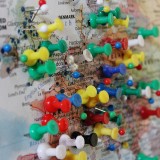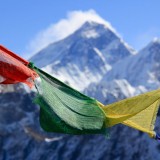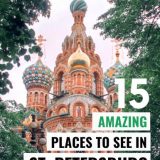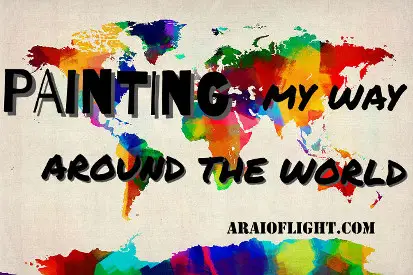150+ Ways To Say GOOD MORNING in Different Languages Around the World

GOOD MORNING. A polite greeting and acknowledgment in the early hours of the day. Each new day provides the opportunity to make our world a happier and more genuine place. Used properly, this greeting can convey well wishes for the day ahead. Along with hello, goodbye, thank you, and I love you -> good morning is one of the most commonly used travel words around the world. And knowing how to say good morning in different languages is a life skill worth having.
Start your day right and read on to find out exactly that…
Do you know:
Where does the term good morning come from?
The term is derived from Middle English gud mornynge (also as goode morne, gode morne), from Old English *gōdne morgen (“good morning”), a conjugate for an expression such as “I wish you a good morning.”
The Modern English word “morning” began in Middle English as morwening. This then developed into morwen, then morwe, and eventually morrow.
This greeting is flexible enough to be used by anyone in almost any setting from the formal to the most casual. A simple ‘good morning’ is likely to be one of the first words you’ll use when travelling and it’s always a good idea to know a few words in the language of the country you’re visiting. Read on to discover how to say good morning in a different language around the world.
What can I say instead of good morning?
- Rise and shine!
- Top of the mornin’ to ya!
- Seize the day with all your might
- Wake up and get your grind on
- May this day bring new opportunities and successes for you
- A little hello and lots of love to start your day
- hello in the a.m.
- I hope that your morning is as bright as your smile
- Look at what the cat dragged in
- Mornin’ mi amigo!
- Good day to you.
- Have a great day.
- Wishing you a day full of sunny smiles and happy thoughts.
- Isn’t it a beautiful day today?
- Look alive
- How is your morning going?
- Your smile brightens the start of my day
- Good morning, sunshine!
- Morning, good looking!
- Wakey-wakey!
- Good morning, sleeping beauty
If you wanted to salute every person in the world, you would need to learn those words from more than 5,000 languages. Thankfully, just by reading this post, you will be able to address good morning in all languages to over 90% of the world’s population 🙂
So whether you find yourself in Africa, Europe, Asia, or Latin America… I’ve got you covered.
Be sure to bookmark and save this post for future use and ease of reference.
Want to learn how to say HELLO and GOOD NIGHT too?
Read this guide on how to say hello in different languages of the world.
Or this good night in different languages.

GOOD MORNING IN DIFFERENT LANGUAGES
Here’s your ultimate guide on 150+ ways to say good morning different languages around the world. Every language….
With pronunciation.
Are you ready to learn some morning greetings around the world?
I have included good morning in every language in the world I could think of. If you don’t spot your language, let me know (in the comments) and I will be happy to add it to this list.
Let’s go… Be sure NOT to miss the bonus at the end ↓↓
Want to learn how to say GOOD BYE and CHEERS too?
Read this guide to say good bye in different languages.
or this post on cheers in all languages.

How do you say good morning in different languages? Every language in the world here ↓
Let’s get into it…
Here’s how to say “good morning” in:
Afrikaans
How to say good morning in Afrikaans:
- Goeie more
— a South African term most commonly used in Afrikaans when meeting in the morning in South Africa. The word is a combination of Dutch words goeie ‘good’ and more ‘morning.’ - More
An informal, shortened version of the greeting above
Afrikaans is a West Germanic language of Southern Africa mostly derived from Dutch. It developed as Dutch settlers and indigenous African mixed languages beginning in the 17th century. Today, an estimated 15 to 23 million people call Afrikaans their mother tongue. It is mainly spoken in South Africa and Namibia and can also be heard in parts of Botswana and Zimbabwe.
Aklan
- mayad nga agahon
Aklan also known as Aklanon is an Austronesian language spoken by 460,000 Aklanon people in the province of Aklan on the island of Panay in the Philippines.
Albanian
- Mirëmëngjes
Albanian is an Indo-European language, spoken mainly in Albania and Kosovo, though it is also spoken in other areas of the Balkans. With about 7.5 million speakers, it comprises an independent branch within the Indo-European languages and is not closely related to any other language in Europe.
Aleut
- Qilachxizax̂
— is the Aleut word for morning
Aleut or Unangam Tunuu is a member of the Eskimo-Aleut language family, spoken by the Aleut people living on the Alaskan Peninsula, and on the Commander, Aleutian, and Pribilof Islands. It is the only language in the Aleut branch of the Eskimo–Aleut language family.
Alsatian
- Güete Morge
Alsatian is a West Germanic language spoken by around 900,000 people, mainly in the Alsace region of northeastern France.
Altai
- Јакшылыкту таҥла (Ĵakšılıktu tañla)
Altai is a language belonging to the Turkic language family and is officially spoken in the Altai Republic of Russia.
Amharic
- እንደምን አደርክ (əndämən addärk)
— used if you’re saying good morning to a man - እንደምን አደርሽ (əndämən addärš)
— used if you are greeting a woman - አንደምን አደሩ (əndämən addäru)
— a formal way to say morning to a group of people
This form is also used if you are using respect to refer to someone, such as if you are speaking to an elderly person
Amharic is a Semitic language and the official language of Ethiopia. Good morning also implies peace be with you. It can also be heard in Egypt and Eritrea, as well as in Israel, Sweden, Canada, and the United States.
Arabic
How to say good-morning in Arabic:
- صباح الخير (Sabah alkhyr)
— a formal, polite way of saying good morning in Arabic
Arabic (العربية) is a Semitic language spoken by over 420 million people as their first language in areas including North Africa countries, the Arabian Peninsula, and other parts of the Middle East. Many more people can also understand it as a second language. Modern Standard Arabic is the liturgical language for 1.6 billion Muslims and is the official written form of the language with the Arabic alphabet, which is written from right to left.
Aragonese
- Buen diya
Aragonese is a language in the Romance language family that is native to Spain and spoken by just over 10, 000 people in the Pyrenees valley of Aragon.
Aramaic
- Safro bricho
- Yasetel liesbukh
Aramaic ארמית is a member of the Semitic branch of the Afro-Asiatic language family that originated among the Arameans in the ancient region of Syria. It has a 3,000-year history and is still spoken by small groups of people in different parts of the Middle East.
Arapaho
- Nii’óóke’
Arapaho is one of the Plains Algonquian languages from the Algic language family, spoken by the Arapaho of Wyoming and Oklahoma.
Armenian
- Բարի’ լույս: (Bari luys)
— response to this is: Աստծո բարին: (Asttzo barin) - Բարի լոյս: (Paree looys)
— Աստուծոյ բարին: (Asdoodzo pareen) is the response to this
Armenian is an Indo-European language spoken in the Republic of Armenia, as well as in large communities of Armenian diaspora by around 6.7 million people.
Assamese
- সুপ্ৰভাত (xuprôbhat)
Armenian is an Indo-European language spoken mainly in the northeast Indian state of Assam, with over 15 million native speakers.
Assyrian
- Kedamtookh brikhta
Assyrian, also known as Syrian or neo Aramaic is the East Semitic dialect that evolved from ancient Akkadian after 1950 B.C. As a Semitic language, it originated from the middle eastern region and is related to Arabic and Hebrew.
Asturian
- Bonos dies
Asturian is a West Iberian Romance language spoken by around 400,000 people in Asturias, Spain.
Australian
- G’day
— usually followed by mate
Australia has no official language, however Australian English is the variety of English spoken here.
Azerbaijani
- Sabahınız xeyir
Azerbaijani or Azeri is the primary and official language of Azerbaijan by its 8.8 million native speakers. It is also widely spoken in Northern Iran and to a small extent in southern Dagestan, the Kvemo Kartli region of Georgia, eastern Turkey, in Shia cities of Iraq, like Karbala and Kirkuk. The language is a Turkic language and is highly intelligible with modern-day Turkish.
Balinese
- Rahajeng semeng
Balinese belongs to the Malayo-Polynesian language family and is spoken by around 3.3 million people on the Indonesian island of Bali as well as the regions of Nusa Penida, Lombok, Java, Sumatra, and Sulawesi.
Basque
- Egun on
Basque (euskara) is a language spoken in the Basque Country (Gipuzkoa, Araba, Bizkaia) and Navarra (in Spain) as well as in the French Basque Country (Labourd, Soule and Basse-Navarre). Linguistically, Basque is a language isolate and is unrelated to the other languages of Europe.
Bashkir
- хәйерле ирте (xäyyerlye irtye)
Bashkir is an endangered language belonging to the Kipchak branch of the Turkic languages. Closely related to the Tatar and Kazakh languages, it is spoken by around 1.4 million native speakers in Russia, as well as in Ukraine, Kazakhstan, Belarus, Uzbekistan, and other neighboring post-Soviet regions.
Bavarian / Austrian German
- Guadn moing
Bavarian is a regional dialect of German spoken in the German state of Bavaria, western Austria, and Northeastern Italy by over 14 million people. It uses German grammar, but takes several root words from Latin.
Belarusian
- Добрай раніцы (Dobray ranici)
Belarusian is the official language of Belarus. This East Slavic language is also spoken in Russia, Ukraine and Poland.
Bengali
- সুপ্রভাত Nomoskar
— a common way of greeting in Bengali. - Additionally Shu-probhaat
can also be used
Bengali বাংলা is the only official language of Bangladesh, one of the 22 official languages of India, and the sixth most spoken language in the world. It is spoken as a first language by the majority of the population in Bangladesh, as well as people in the Indian state of West Bengal.
Berber
- tifawin
- sbah Lkhir
Berber, also known as the Amazigh languages, is a branch of the Afroasiatic language family that comprises of around forty closely related languages spoken by the Berbers. The Berber people are indigenous to North Africa, with the heaviest concentration found in Morocco. The major Berber languages include Tamazight, Tarifit, Tashelhit (Tashelhiyt, Tashelhait, Shilha), Kabyle, and Tamahaq.
Bhojpuri
- राम राम (raam raam)
Bhojpuri is an Indo-Aryan language, considered to be one of the most rapidly growing languages in the world, spoken by over 40 million speakers in northern-eastern India and the Terai region of Nepal.
Bislama
- Gudmoning
Bislama is an English-based creole language and one of the official languages of the island of Vanuatu with around 10,000 native speakers.
Bodo
- मोजां फुं (Mwjang Fung)
Bodo बर’/बड़ is the Sino-Tibetan language spoken primarily by the Bodo people of Northeast India, Nepal, and Bengal. It is official language of the Bodoland Autonomous region and co-official language of the state of Assam in India.
Bosnian
- Dobro jutro
Bosnian, a south Slavic language of the Indo-European family, is the official language of Bosnia and is essentially the same language as Croatian and Serbian. All three languages used to be known as Serbo-Croatian before the break-up of Yugoslavia.
Brazilian Portuguese
- Bom dia
Brazilian Portuguese (Português do Brasil) is the variety of Portuguese dialect spoken in Brazil. It is spoken by virtually all of the 200 million inhabitants of Brazil and spoken widely across the Brazilian diaspora. European Portuguese differs from the Brazilian variety in pronunciation, as well as in some vocabulary.
Breton
- Demat
Breton is a Southwestern Brittonic language of the Celtic language spoken in Brittany in the northwest of France.
Bulgarian
Say good morning in Bulgarian:
- Добро утро (Dobro utro)
Bulgarian is a South Slavic language spoken in Southeastern Europe, primarily in Bulgaria. It is the country’s only official language and Bulgarian is written with Cyrillic.
Burmese
- Mingalarba မင်္ဂလာနံနက်ခင်းပါ
Burmese is a Sino-Tibetan language spoken in Myanmar where it is an official language and the language of the Bamar people, the country’s principal ethnic group.
Cambodian Khmer
- ’ârŭn suŏ sdei អរុណសួស្តី
Khmer is the language of the Khmer people and the official language of Cambodia. With over 16 million speakers, it is the second most widely spoken Austroasiatic language.
Catalan
- Bon dia
Catalan is a Western Romance language derived from Vulgar Latin and named after the medieval Principality of Catalonia, in northeastern of modern Spain. It is the only official language of Andorra, and a co-official language of the Spanish autonomous communities of Catalonia, the Balearic Spanish Islands and Valencia.
Cebuano
- Maayong adlaw
- Maayong buntag
Cebuano, also known as Bisaya or Binisaya, is an Austronesian language spoken in the southern Philippines region in Central Visayas, western parts of Eastern Visayas and the majority of Mindanao.
Chichewa
- M’mawa wabwino
- Mwauka bwanji
Chichewa, also known as Nyanja, is a Bantu language spoken in much of Southern, Southeast and East Africa. It is the national language of Malawi and is also spoken in Zambia, Mozambique and Zimbabwe.
Chinese Cantonese
How to say good-morning in Chinese Cantonese:
- jóusàhn 早晨
— A formal way to say good morning
Cantonese is a variety of Chinese originating from the city of Guangzhou and its surrounding area in Southeastern China. Belonging to the Sino-Tibetan family of languages, it is the traditional prestige variety of the Yue Chinese dialect group, which has about 68 million native speakers.
Chinese Mandarin
- zǎo’ān 早安
- zǎoshàng hǎo 早上好
- zǎochén hǎo 早晨好
- nǐ zǎo 你早
Mandarin Chinese is the official language of Mainland China and Taiwan, and is one of the official languages of Singapore. Mandarin is often placed first in lists of languages by number of native speakers with almost a billion speakers.
Cimbrian
- Guuten mòrgont
Cimbrian is a language of Germanic origin spoken by more than 2,000 people in Northern Italy. It is related to Bavarian and refers to any of several local Upper German varieties spoken in the region, with the speakers of the language referred to as Zimbern.
Cornish
- Myttin da
Cornish is a Southwestern Brittonic language that forms part of the Celtic language family. It became an extinct language in Cornwall at the end of the 18th century and underwent a revival in the 20th century.
Corsican
- Bonghjornu
— the most commonly used way of saying good-morning in Corsican
Corsican is a Romance language from the Italo-Dalmatian family that is spoken predominantly on the Mediterranean tropical island of Corsica. Corsican is closely related to Tuscan and to the Florentine-based Italian.
Croatian
Say good morning in Croatian:
- Dobro jutro
Croatian or Hrvatski is a South Slavic language spoken mainly in Croatia, Bosnia and Herzegovina, some parts of Serbia, and the neighbouring countries by about 5.5 million people.
Czech
- dobré ráno
- dobrý den
Czech is a Western Slavic language which is mutually intelligible with Slovak. It is mainly spoken in the Czech Republic with over 10,5 million speakers.
Danish
- Godmorgen
Danish is a Scandinavian language and the only official language of the Kingdom of Denmark. Closely related to Swedish and Norwegian, it is spoken in Denmark and in some parts of Greenland and northern Germany.
Dhivehi
- Ba’ajjaveri hedhuneh
Dhivehi or Maldivian is an Indo-Aryan language spoken on the islands of Maldives where it is an official language.
Dutch
- Goedemorgen
— the most common way of saying good morning in Dutch.
Dutch is a West Germanic language spoken by about 27 million people world-wide mostly in the Netherlands, northern Belgium, and Suriname.
Dzongkha Bhutanese
- ངྲོ་པདེ་ལེགས། Dobro delek
- Chubo dele
Dzonkha or Bhutanese is the sole official and national language of the Kingdom of Bhutan. This Sino-Tibetan language is spoken by over half a million people in Bhutan and is written with the Tibetan alphabet.
Elfdalian
- Gumåron
Elfdalian also called Övdalian is a North Germanic Indo-European language spoken by up to 3,000 people in the Älvdalen region of Sweden.
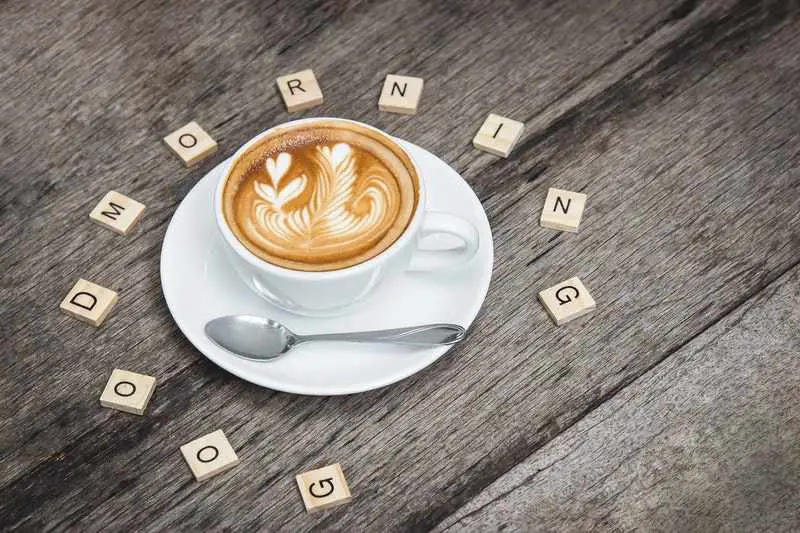
English
Ways to say good morning different languages in English:
- good morning
— this is the standard morning greeting - morning
— a casual friendly way of greeting early in the day
English is a West Germanic language that was first spoken in Anglo-Saxon England in the early Middle Ages. It is spoken in many countries around the world with over 375 million native speakers. English is the second most spoken language, and the most international language in the world.
Estonian
- tere hommikust
— the most common way of saying good morning in Estonian
Estonian is a Finno-Ugric language spoken as the official language in Estonia. It is closely related to Finnish.
Faroese
- Góðan morgun
Faroese is a North Germanic language spoken as a first language by Faroe Islanders, residing on the Faroe Islands and in other areas, mainly Denmark.
Farsi / Persian
How to say good morning in Persian:
- Sob Bekhair صبح بخیر
- Salam
— is a more commonly used, casual greeting to use with friends.
Persian is an ancient language belonging to the Iranian branch of the Indo-Iranian subdivision of the Indo-European languages. It is a pluricentric language predominantly spoken and used officially within Iran, Afghanistan, and Tajikistan.
Fijian
- Ni sa yadra
- Yadra
Fijian is an Austronesian language of the Malayo-Polynesian family. It is an official language of Fiji spoken by some 350,000–450,000 ethnic Fijians as a native language.
Finnish
- Hyvää huomenta
- Huomenta
Finns usually greet each other in an informal way, so you can use the casual greetings in 99% of all situations.
Finnish is a Finno-Ugric language spoken only in Finland as the official language and by ethnic Finns elsewhere in Scandinavia.
Flemish
- Goeije morn
Native to the historical region of Flanders in northern Belgium, Flemish is a Low Franconian dialect cluster of the Dutch language. It is sometimes referred to as Flemish Dutch, Belgian Dutch, or Southern Dutch spoken by over 6 million people.
French
How to say good morning in French:
- Bonjour
— the most common way of saying good morning, and translates to good day.
Pronunciation: bon·zhuor - bon matin
— can also be used
French is a Romance language of the Indo-European family spoken by over 354 million people in France and around the world. It is the third most spoken language in Europe, the official language of 29 countries, spoken in parts of Africa, North America, and South America.
Frisian
- Goeie moarn
The Frisian languages are a closely related group of Germanic languages, spoken by about 500,000 Frisian people, who live on the southern fringes of the North Sea in the Netherlands and Germany.
Friulian
- Bundì
Friulian or Friulan is a Romance language of the Rhaeto-Romance family. It is spoken in the Friuli region of northeastern Italy with around 600,000 total speakers.
Galician
- Bos días
Galician is a Romance language spoken by around 2.4 million people in Galicia, a region in northwestern Spain, where it is the official language.
Georgian
- დილა მშვიდობისა Dila mushwidobisa
Georgian is the official language of Georgia and the country’s most widely spoken language with over 4.1 million people.
German
Learn how to say good morning in German:
- Guten Morgen
— used formally in German
German Deutsch is the official language of both Germany and Austria and one of the three official languages of Switzerland. German belongs to the West Germanic group of the Indo-European language family. One of the major languages of the world, German is a native language to almost 100 million people worldwide and the most widely spoken native language in the European Union.
Gilbertese Kiribati
- Ko kaman uuti?
— to ask have you been awake for long? - E uara matiuum
— meaning how was your sleep
Gilbertese, also called Kiribati, is an Austronesian Oceanic language spoken mainly in Kiribati, but also on the islands of Fiji, the Solomon Islands, and Tuvalu.
Greek
How to say good-morning in Greek:
- Καλημέρα (Kaliméra)
- Καλημέρα σας (Kaliméra sas)
- Καλημέρα σου (Kaliméra su)
Greek (ελληνικά) belongs to the Hellenic branch of the Indo-European language family, mainly spoken in Greece, the Greek islands, and Cyprus an an official language. It has the longest documented history of any living Indo-European language, spanning more than 3,000 years of written records. There are about 13.1 million speakers of Greek worldwide and it is recognised as a minority language in Albania, Armenia, Hungary, Italy, Romania, Turkey, and Ukraine.
Greenlandic
- Iterluarit
— is the Greenlandic word for a good morning - Kumoorn
Greenlandic falls under the Eskimo–Aleut language family, spoken by around 57,000 Greenlandic Inuit people in Greenland.
Gujarati
- સુપ્રભાત (suprabhat)
Gujarati is an Indo-Aryan language native to the Indian state of Gujarat and spoken predominantly by the Gujarati people. Gujarati is part of the greater Indo-European language family.
Haitian Creole
Say goodmorning in Haiti:
- Bonjou
Haitian Creole (kreyòl ayisyen)) is a French-based creole language spoken by 10–12 million people worldwide and the only language of most Haitians. Along with French it is one of the official languages of Haiti.
Hausa
- Ina kwana
- Barka da safiya
Hausa language, the most important indigenous bridge language in West and Central Africa, spoken as a first or second language by about 40–50 million people. It belongs to the Western branch of the Chadic language family within the Afro-Asiatic language phylum. It is spoken mainly in northern Nigeria and Niger, and also in Benin, Burkina Faso, Cameroon, the Central African Republic (CAR), Chad, Congo, Eritrea, Germany, Ghana, Sudan and Togo.
Hawaiian
How to say good morning in Hawaiian:
- Aloha kakahiaka
— this Hawaiian word is used for both welcome and morning. Additionally, the word is also used as an expression of love and well wishes. In fact, the expression is used so often, which is why Hawaii also goes by the nickname Aloha State.
The Hawaiian language is a Polynesian language that takes its name from Hawaiʻi, the largest island in the tropical North Pacific archipelago where it developed. Hawaiian, along with English, is an official language of the State of Hawaii, one of the best islands to visit.
Hebrew
- Boker tov בוקר טוב
Hebrew is a Northwest Semitic language spoken by over nine million people worldwide. Historically, it is regarded as the language of the Israelites and their ancestors. It is written using its own script from right to left.
Hindi
How to say good morning in Hindi:
- शुभ प्रभात shubh prabhaat
- नमस्ते namaste
- Shub Din
Hindi (हिन्दी) is an Indo-European language spoken in India, Nepal, and throughout the Indian diaspora. Hindi is descended from Sanskrit, sometimes called “the mother of all languages.” While there are 22 official languages and over 1,000 dialects of India, Hindi and English take precedence in government affairs. It is a link-language for over half of India’s population.
Hmong
- Zoo thaum sawv ntxov
Hmong is a Hmong-Mien language spoken by about 2.6 million people in China, Vietnam, Laos, Thailand, USA, and French Guiana.
Hopi
- Nukwang Talöngva
Hopi is a Uto-Aztecan language spoken by the Hopi people in northeastern Arizona, USA.
Hungarian
How to say good morning in Hungarian:
- Jó reggelt
Hungarian is a Uralic language of the Ugric branch spoken in Hungary and parts of several neighbouring countries. It is the official language of Hungary and one of the 24 official languages of the European Union.
Icelandic
- Góðan daginn
- Góðan dag
Icelandic (íslenska) is a North Germanic language spoken in Iceland as its official language. It’s most closely related to Faroese and Western Norwegian and has around 314,000 speakers. The language is more conservative than most other Western European languages.
Igbo
- Ụtụtụ ọma
Igbo is the principal native language of the Igbo people of southeastern Nigeria with around 45 million speakers and over 20 dialects.
Indonesian Bahasa
- Selamat pagi
— used when saying good morning in Bahasa. - Selamat siang
Indonesian (bahasa Indonesia) is the official language of Indonesia.With over 230 million speakers, it is one of the most widely spoken languages in the world. It is a group of varieties of Malay, an Austronesian language that has been used as the common language in the multilingual Indonesian archipelago for centuries. Indonesia uses the Latin alphabet system and Arabic numerals.
Inuktitut
- ᐅᓪᓛᓴᒃᑯᑦ
Ublaahatkut/Ullaasakkut
Inuktitut is an Eskimo-Aleut language spoken in Arctic territories and the topmost span of North America including Alaska and Northern Canada.
Irish
- Maidin mhaith
- Dia dhuit ar maidin
(singular) - Dia dhaoibh ar maidin
(plural)
Irish (Gaeilge) is one of the three Goidelic languages, along with Scottish Gaelic and Manx. This Goidelic branch together with the Brythonic branch (Welsh, Cornish and Breton) form the Celtic language family.
Italian
How to say good morning in Italian:
- Buongiorno
— the most common way of saying good morning in Italiano. While there are other ways of saying good morning in Italian, buongiorno works in almost every situation.
Italian (Italiano) is a Romance language of the Indo-European language family spoken by over 90 million people, the vast majority of which are in mainland Italy, and the Italian islands of Sicily and Sardinia. It is the official language of Italy, San Marino, and the Vatican City, closely descended from Latin.
Japanese
Saying good morning in Japanese:
- おはようございます (Ohayō gozaimasu)
— This term is the best way to greet someone in the early hours of the morning before 10 a.m. - おはよう (ohayō)
Japanese (日本語 Nihongo) is an East Asian language of the Japonic language family. It is spoken by about 125 million people, mostly in Japan, where it is the official and national language. Bowing, dating back to the 5th century, is a huge part of Japanese culture and is a sign of respect. In Japan, people readily bow to one another rather than actually saying the words.
Jamaican Patois
- Gud mawnin
Jamaican Patois, often also referred to as Jamaican Creole, is an English-based creole language with West African influences spoken mainly in Jamaica. Belonging to the English Creole language family, it is spoken by the majority of Jamaicans with over 3 million native speakers.
Javanese
- Sugeng énjing
Javanese is the language of the Javanese people of the island of Java, in Indonesia that is the native language of more than 98 million people.
Kannada
- ಶುಭೋದಯ shubhodaya
Kannada, spoken by nearly 45 million native speakers, is a Dravidian language of the people of Karnataka in southwestern India, and by significant linguistic minorities in the states of Maharashtra, Andhra Pradesh, Tamil Nadu, Telangana, Kerala and abroad.
Karelian
- Hyviä huondestu
Karelian is a Finno-Ugric language of the Uralic language family, spoken in Karelia republic of northwestern Russia.
Kashubian
- Dzen dobri
Kashubian is a member of the West Slavic group of Slavic languages with around 100,000 speakers in Poland.
Kazakh
- Қайырлы таң Qayırlı tañ
Kazakh is a Turkic language of the Kipchak branch spoken in Central Asia and the official language of Kazakhstan. The language comprises 21 million native speakers including regions of Bayan-Ulgii in Mongolia and the Dzungarian region of Xinjiang, China.
Korean
Good morning in Korean:
- 안녕하십니까 (annyeong hashimnikka)
— this is the most common way to say good morning. - 좋은아침 joh-eun achim
Korean, an East Asian language, is the official language of South Korea (Republic of Korea) and North Korea (Democratic People’s Republic of Korea) spoken by more than 75 million people.
Kurdish
- Beyanî baş
- Spéde bi xer (sg)
Kurdish is spoken by about 30 million Kurds in western Asia including parts of Kurdistan, Iraq, Turkey, Iran, and Syria. It is one of the Indo-Iranian languages, ranks as the third largest Iranian language, after Persian and Pashto.
Kyrgyz
- кайырдуу таң
- Кутмандуу таңыңыз менен
Kutmanduu tanyngyz menen
Kyrgyz is a member of the Kipchak branch of the Turkic language family spoken by over 4 million speakers mainly in Kyrgyzstan, and also in China, Tajikistan, Afghanistan and Turkey.
Lao
- ສະບາຍດີຕອນເຊົ້າ
Arrun Suo Sdey
Lao is the main language of Laos. It is a Kra–Dai language serving as a common language among all citizens of Laos, who speak approximately 90 other languages, many of which are unrelated to Lao. Modern Lao is heavily influenced by the Thai language and comprises over 30 million native speakers.
Latin
How to say goodmorning in Latin:
- Bonum mane
- Quid agis mane
Latin was the dominant language of the Roman Empire from 6th century BC to 600 AD. When the Roman Empire collapsed, Latin evolved into the various languages that we know today. Italian, French, Portuguese, Spanish, and Romanian all consider Latin as their parent tongue. Latin is a classical language belonging to the Italic branch of the Indo-European languages.
Latvian
- Labrīt
Latvian (latviešu valoda) is an Indo-European Eastern Baltic language spoken in the Baltic region. It is the official language of Latvia and one of the official languages of the European Union.
Limburgish
- Gojemörge
Limburgish is a member of the East Low Franconian group of the Germanic languages considered a variety of German or Dutch by many people. It is spoken by around 1.6 million people in the Netherlands and Belgium.
Lingala
- Mbote
Lingala is a Bantu language spoken throughout the northwestern part of the Democratic Republic of the Congo and a large part of the Republic of the Congo by over 70 million people.
Lithuanian
Good morning to you in Lithuanian:
- Labas rytas
Lithuanian (lietuvių kalba) is an Eastern Baltic language spoken in the Baltic region as the official language of Lithuania. It is also one of the official languages of the European Union spoken by just under 3 million native speakers. The language is one of the oldest in the world.
Luxembourgish
- Gudde Moien
Luxembourgish is a West Germanic language that is spoken mainly in Luxembourg. About 390,000 people speak Luxembourgish worldwide.
Luganda
- Wasuze otya nno
Luganda, a Bantu language, is an official language of Uganda along with English and Swahili. It is spoken primarily in Kampala, but may be understood in much of the country and in the African Great Lakes region.
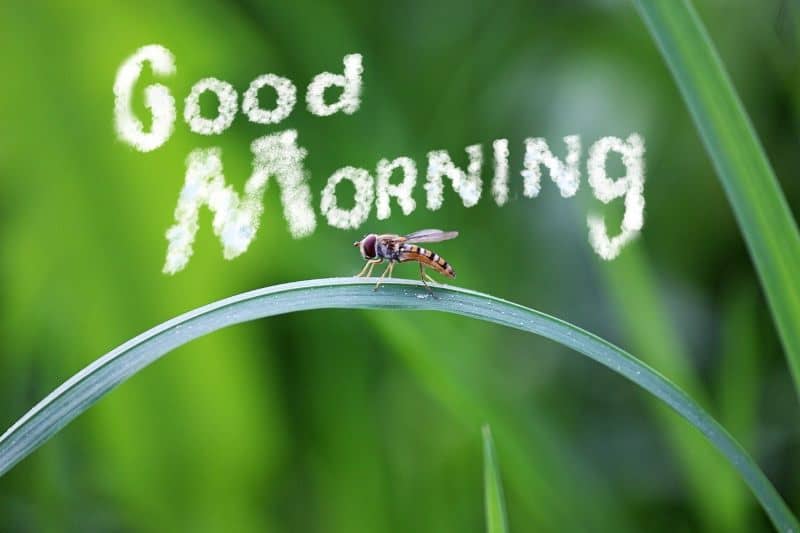
Macedonian
- Добро утро (Dobro utro)
Macedonian, the official language of the Republic of North Macedonia, is a south Slavic language spoken as a first language by 2 million people.
Malagasy
- Salama
- Manahoana
Malagasy is the national language of Madagascar belonging to the Austronesian Malayo-Polynesia family of languages spoken by 25 million people.
Malay
- Selamat Pagi
Malay (Bahasa Melayu) is an Austronesian language spoken as the sole official language of Malaysia and Brunei. It is also heard in Indonesia, Singapore, and Thailand at a total of 250 – 300 million speakers.
Malayalam
- സുപ്രഭാതം Suprabhatham
Malayalam (മലയാളം) belongs to the Dravidian language family, spoken mostly in the Southern Indian states of Kerala and Lakshadweep. Around 36 million people use this language, which is one of the 22 official languages of India.
Maltese
Say morning in Maltese:
- Bongu
- Bonġornu
- L-għodwa t-tajba
Maltese, a language of central Semitic origin written in the Latin script, is the national language of the island of Malta. It is spoken by around 420,000 people on the Mediterranean islands of Malta, Gozo, and Comino. The Maltese language developed from Sicilian Arabic. Over the centuries, it has incorporated many words derived from English, Italian, and French.
Maori
- Ata mārie
- Pai ata
Māori is an Eastern Polynesian language spoken by the Māori people, the indigenous population of New Zealand. it has also gained recognition as one of New Zealand’s official languages.
Marathi
- शुभ प्रभात Su-prabhat
Marathi is an Indo-Aryan language spoken by around 83.1 million Marathi people of Maharashtra, India. It is the official language and co-official language in the Maharashtra and Goa states of Western India, respectively, and is one of the 22 scheduled languages of India.
Marshallese
- Morning!
Marshallese, also known as Ebon, is a Micronesian language spoken in the Marshall Islands by about 44,000 people. It is an official language of the Marshall Islands, along with English, and is used as the language of instruction in most primary schools.
Mauritian Creole
- Bonzour
Mauritian Creole or Morisien, the de facto language of Mauritius, is a French-based creole language that is closely related to the Rodriguan, Seychellois, and Chagossian Creoles.
Mongolian
- Өглөөний мэнд Öglouny mend
Mongolian is the official language of Mongolia and both the most widely-spoken and best-known member of the Mongolic language family. It is an Altaic language spoken by approximately 5 million people in Mongolia, China, Afghanistan, and Russia.
Moroccan Arabic
- Sabah el kheyr
— respond with sabah al noor
Moroccan Arabic, also known as Darija, is a form of vernacular Arabic spoken in Morocco. It is part of the Maghrebi Arabic dialect continuum, with over 30 million native speakers.
Nahuatl
- tlanecic
- Cualli tonalli
— is how you say good day in Nahuatl - ¿Quen otlathuililo?
— How was the dawn?
Nahuatl is a group of languages of the Uto-Aztecan language family. It was the language of the Aztecs and the Toltecs. Variations of Nahuatl are spoken by around 1.7 million Nahua people of Central Mexico and the USA and Nahuatl remains the most widely-spoken group of Native American languages in North America.
Navajo
- yá’át’ééh abíní
Navajo is an American Indian language of the Athabascan family, spoken by around 170, 000 Navajo people in the Southwestern United States regions of Arizona, New Mexico, Utah, and Colorado.
Ndebele
- Livukenjani
— is the Ndebele word for good morning
Ndebele, an African language of the Nguni group of Bantu languages, is spoken by around 5 million Northern Ndebele people of Zimbabwe.
Nepali
Good-morning in Nepali:
- namaste नमस्ते
- शुभ प्रभात subha prabhat
Nepali (नेपाली), is an Indo-Aryan language of the sub-branch of Eastern Pahari written in Devanagari script It is the sole official language of Nepal and one of the 22 scheduled languages of India. While most Nepalese people speak at least some Nepali, there are more than 100 different languages and dialects spoken in Nepal.
Neapolitan
- buongiorno
- bonnì
Neapolitan is a Romance language of the Italo-Dalmatian group spoken across much of southern Italy by 6 million people. It is related to but generally not mutually intelligible with Italian.
Nkore
- Oraire ota
Nkore or Runyankore is a Bantu languageof the Niger-Congo language family spoken by approximately 2.3 million Nkore people of south-western Uganda.
Northern Sotho / Sepedi
- Thobela
- Dumêlang
- Mmorong
Northern Sotho is a Bantu language spoken primarily in South Africa, where it is one of the 11 official languages. It is spoken by about 4.2 million people in the South African provinces of Gauteng, Limpopo, and Mpumalanga.
Norwegian
Say good-mornin’ in Norwegian:
- God morgen
Norwegian (norsk) is a Germanic language derived from Old Norse spoken primarily in Norway by over 5 million people where it is the official language.
Odia
- ଶୁଭ ସକାଳ (suprabhāta)
Odia is an Indo-Aryan language spoken in the Indian state of Odisha where it is the official language.
Oromo
- Akkam bultee
Oromo is a Cushitic language spoken by about 30 million people in Ethiopia, Kenya, Somalia, and Egypt. It is the third largest language in Africa.
Palauan
- Ungil tutau
- Ungil chodochosong
— this is a mid-morning greeting
Palauan is a Malayo-Polynesian language spoken by almost 20,000 people in the Republic of Palau, where it is one of the two official languages, alongside English. It is also heard in Guam and Northern Mariana Islands.
Papiamento
- Bon dia
- Mòro
Papiamento is a Portuguese-based creole language spoken in the Dutch Caribbean by less than 500,00 native speakers. It is the most-widely spoken language on the Caribbean ABC islands, having official status in Aruba, Bonaire, and Curaçao.
Pashto
Mornin’ in Pashto:
- سهار مو پخير Sahar de pa Khair
Pashto is an Eastern Iranian language in the Indo-European family spoken in Afghanistan, Pakistan and Iran. It is an official language of Afghanistan along with Dari.
Polish
Say good morning in Polish:
- Dzień dobry
Polish (polski) is a West Slavic language spoken by about 45 million people. Said to be one of the hardest languages to learn, it is the official language of Poland. It is understood and can be used for communication in the western parts of Ukraine, Belarus and Lithuania.
Portuguese
Learn of how to say good morning in Portuguese:
- Bom dia
Portuguese (português) is a Romance language spoken as the official language of Portugal and Brazil. It is also the official language of Cape Verde, Guinea-Bissau, São Tomé e Principe, Angola, Mozambique, and the co-official language of East Timor, and Macau. There are around 250 million native Portuguese speakers worldwide.
Punjabi
- ਸ਼ੁਭ ਸਵੇਰ
Sat Shri Akal
Punjabi is an Indo-Aryan language with more than 130 million native speakers in the Indian subcontinent and around the world. It is the 10th most spoken language in the world.
Romanian
Say good morning in Romanian:
- Bună dimineața
Romanian (limba română) is a Balkan Romance language spoken by approximately 24–26 million people as a native language, primarily in Romania and Moldova, and by another 4 million people as a second language. Although it descended from Vulgar Latin, Romanian was influenced by Slavic and Greek languages in the Middle Ages. It is an official and national language of both Romania and Moldova.
Romansh
- Bun di
— pronounced (boon dee)
Romansh is a Romance language spoken predominantly in the Swiss canton of the Grisons and Graubünden. Romansh, recognized as an official language of Switzerland, is considered an endangered language.
Russian
How to say good morning in Russian:
- Доброе утро (Dobroye utro)
— pronounced: DOH-bruh-yeh OO-truh
Russian is an East Slavic language spoken by 300+ million people worldwide. It is is an official language in the Russian Federation, Belarus, Kazakhstan and Kyrgyzstan, and many other people in Central Asia, the Baltic states, the Caucasus, and Eastern Europe know it as a second language. Commonly written in Cyrillic, it is the 8th most widely spoken language in the world.
Samoan
- oa mai le ataeao
- Manuia le taeao
Samoan is the official language spoken in the Samoan Islands, which is made up of the Independent State of Samoa and the American Samoa. The language is the most spoken of the Polynesian language family with a total of 510,000 speakers worldwide.
Sanskrit
- सुप्रभातम् (suprabhātam)
— a word for good morning in Sanskrit
Sanskrit is a 4,000-year-old classical language that belongs to the Indo-Aryan branch of the Indo-European languages. Known as ‘the mother of all languages,’ Sanskrit is the root of many, but not all, Indian languages. It is also the liturgical language of Buddhism, Hinduism, and Jainism. Sanskrit has less than 15,000 native speakers at present and is mostly used by Hindu priests during religious ceremonies.
Sardinian
- Bona dia
- Bon jiorno
Sardinian or Sard is a Romance language spoken by over 1.5 million inhabitants of the Mediterranean island of Sardinia in Italy.
Scots Gaelic
- Madainn mhath
Scots Gaelic is a Goidelic language of the Celtic and Indo-European language family, native to the Gaels of Scotland. As a Goidelic language, Scottish Gaelic, like Modern Irish and Manx, developed out of Middle Irish.
Serbian
- Добро јутро (Dobro utro)
Serbian is a South Slavic language spoken mainly in Serbia, Bosnia and Herzegovina, Montenegro, Croatia, and Macedonia by about 9 million people. Serbian is the official and main language of Serbia and Montenegro.
Sesotho
- Dumela
- Khotsong
- Mmoro
Sesotho (Sotho) is a Southern Bantu language of the Sotho-Tswana group, spoken primarily by the Basotho in Lesotho, where it is the national and official language, South Africa, where it is one of the 11 official languages and in Zimbabwe where it is one of 16 official languages.
Shanghainese Wu
- 侬早 (nóng zō)
- 早晨好 (zōlǎng hō)
- 早安 (zō ä)
Shanghainese, part of the Sino-Tibetan language family, is a variety of Wu Chinese spoken in the central districts of the City of Shanghai and its surrounding areas by 10 – 14 million speakers.
Shona
- Mangwanani akanaka
Shona, one of the most widely spoken Bantu languages, is the main language in Zimbabwe.
Sindhi
- صبح جو سلام
Sindhi, an Indo-Aryan language, is the official language of the Pakistani province of Sindh and spoken by over 25 million Sindhi people.
Sinhala
- සුභ උදෑසනක් (Suba Udesanak Wewa)
Sinhala is an Indo-Aryan language spoken by approximately 16 million Sinhalese people in Sri Lanka and is one of two official languages of Sri Lanka.
Slovak
- Dobré ráno
— until 8 am - Dobrý deň
— used from 8 am until dark
Slovak, the official language of Slovakia, is a West Slavic language where it is spoken by approximately 5.6 million people.
Slovenian
- Dobro jutro
— used until 8am - Dober dan
— used from 8am until sunset
Slovenian, an Indo-European language of the South Slavic language branch is the official and national language of Slovenia spoken by less than 3 million people.
Somali
- Subax wanaagsan
Somali, an Afro-Asiatic language spoken by over 16 million people, is an official language of Somalia, a national language in Djibouti, and a working language in the Somali Region of Ethiopia.
Spanish
How do you say good morning in Spanish:
- Buenos días
— “la mañana” is Spanish for “the morning.” When wishing someone good morning, use Buenos días, which translates to: good days.
Spanish is the second most widely used language in the world natively spoken by more than 437 million people including Spain, most of Central and South America, Mexico, and the USA. There are over 21 countries in the world that have Spanish as their official language. It is a Romance language that originated in the Iberian Peninsula.
Sundanese
- Wilujeng enjing
Sundanese is a Malayo-Polynesian language spoken by about 39 million people mainly in western Java in Indonesia. There are also speakers in Banten, Jakarta, parts of western Central Java and southern Lampung. It is the third most-spoken language in Indonesia.
Swahili
- habari ya asubuhi
Swahili is a Bantu languages spoken by the Swahili communities in Kenya, Tanzania, Uganda, Rwanda, Burundi, Mozambique and the Democratic Republic of Congo.
Swati
- Sawubona
- Kusile sihlobo sami
Swati or Swazi is a Bantu language of the Nguni group spoken in Eswatini and South Africa by the Swazi people. It is the official language of Swaziland (along with English) and since 1994 one of the nine indigenous languages to enjoy official recognition in South Africa. The number of speakers is estimated to be in the region of 2.4 million.
Swedish
How to say good morning in Swedish:
- God morgon
Swedish is a North Germanic language, closely related to Norwegian and Danish spoken by around 10 million people. A descendant of Old Norse, it is the national language of Sweden and the official language of the Åland Islands.
Swiss German
- Guten Morgen
- Grüezi
Swiss German is the collective name for the great variety of Upper German dialects spoken in Switzerland, Liechtenstein, in the Austrian province of Vorarlberg, in parts of Baden-Württemberg in Germany and Alsace in France.
Tagalog Filipino
- Magandang umaga po
— formal way of greeting - Magandang umaga
— informal way of greeting
Tagalog is an Austronesian language spoken as a first language by a quarter of the population of the Philippines and as a second language by the majority. Its standardized form, officially named Filipino, is the national language of the Philippines, and is one of two official languages alongside English.
Tahitian
- ‘Ia ora na ‘oe
- ‘Ia ora na ‘outou
Tahitian belongs to the Eastern Polynesian language group, spoken mainly on the Society Islands in French Polynesia and Bora Bora.
Taiwanese Hokkien
- 爻早 (gau-tsa)
Taiwanese Hokkien is the Hokkien dialect of Min Nan as spoken by about 70 percent of the population of Taiwan.
Tajik
Good morning in Tajik:
- Субҳ ба хайр (Subḩ ba xajr)
Tajik is the main language of Tajikistan, closely related to Farsi and Kurdish. Since the late 1930s, it is written using a variant of the Cyrillic script.
Tamil
- காலை வணக்கம் (Kālai vaṇakkam)
— formal - கால வணக்க (kaala vanakkã)
— informal
Tamil is a Dravidian language spoken in southern India, Sri Lanka and Singapore by about 67.5 million people.
Tatar
- Xeyírlí irte
Tatar (татарча), the national language of the Tatars, is a Turkic language spoken mainly in the Russian republic of Tatarstan as well as Siberia by about 7 million people in Central Asia. It refers to the Volga-Kipchak Kipchak subgroup of the Turkic group of languages.
Telugu
- శుభోదయం subhodayamu
- సుప్రభాతం supra bhetam
Telugu is a Dravidian language spoken in the Indian states of Andhra Pradesh, Telangana and the union territories of Puducherry by 75 million Telugu people.
Thai
Good morning in Thai:
- สวัสดีครับ (sà-wàt-dee kráp)
— male - สวัสดีค่ะ (sà-wàt-dee kâ)
— female
Thai ภาษาไทย, the sole official and national language of Thailand, spoken by 50 million people, belongs to the Tai group of the Kra–Dai language family of Southeast Asia.
Tibetan
- སྔ་དྲོ་བདེ་ལེགས། (nga-to delek)
- ཤོགས་པ་བདེ་ལེགས། (shokba delek)
Tibetan is an official language of the Tibet Autonomous Region of the People’s Republic of China. The Tibetic languages are a cluster of Tibeto-Burman languages descended from Old Tibetan, spoken across a wide area of eastern Central Asia bordering the Indian subcontinent, including the Tibetan Plateau and the Himalayas.
Tongan
- mālō tau ma‘u e pongipongi ni
Tongan is an Austronesian language of the Polynesian branch mainly spoken in Tonga, where it is the official language.
Tsalagi Cherokee
- ᎣᏍᏓ ᏑᎾᎴᎢ (Osda sunalei)
- ᎣᏍᏓ ᏒᎾᎴᎢ (Osda svnalei)
Cherokee (Tsalagi) belongs to the Iroquoian language family. The Cherokee language is unique among Native American languages in that it is both a written and spoken language.
Tshivenda
- Ndi matsheloni
- Matsheloni Avhudi
Tshivenda or Venda is a Bantu language spoken by the Venda people of South Africa where it is an official language.
Tsonga
- Avuxeni
Tsonga is a Bantu language spoken by the Tsonga people totalling 12 million people mainly in South Africa, but also Mozambique and Eswatini.
Tswana
- Dumêla rra
- Dumêla mma
Tswana is a Bantu language spoken by about 4.4 million people in Bostwana, where it is the national and majority language, Namibia, Zimbabwe, and South Africa. The majority of speakers, about 3.6 million, live in South Africa, where the language is officially recognised.
Turkish
Good morning in Turkish:
- Günaydın
Turkish is a Turkic language believed to be of the Altaic language family spoken mainly in Turkey, Northern Cyprus, Cyprus, and other countries of the former Ottoman Empire by about 88 million people.
Turkmen
- Ertiriňiz haýyrly bolsun
Turkmen belongs to the Turkic language family and is spoken by around 11 million Turkmen people of Central Asia, mainly in Turkmenistan, Afghanistan, and Iran.
Ukrainian
Good morning in Ukrainian:
- Добрий ранок (Dobre rano)
- Доброго ранку (Dobroho ranku)
Ukrainian is an Eastern Slavic language spoken mainly in Ukraine by about 51 million people.
Urdu
- صبح بخیر
Urdu is the official national language and lingua franca of Pakistan. It is a member of the Indo-Aryan group within the Indo-European family of languages and is mutually intelligible with Hindi.
Uyghur
- خەيرلىك ئەتىگەن
— (Ätigänlikingız xäyrılik bolsun)
Uyghur is a Turkic language of the Karluk branch written in a Uyghur Perso-Arabic script. It is spoken primarily by 10 million Uyghur people in the Xinjiang Uyghur Autonomous Region of China.
Uzbek
- Xayrli tong
Uzbek is a Turkic language that is the official national language of Uzbekistan spoken by around 27 million people.
Vietnamese
How to say good morning in Vietnamese:
- Chào buổi sáng
Vietnamese is an Austroasiatic language spoken mainly in Vietnam, where it is the national and official language, by about 82 million people.
Welsh
How to say good morning in Welsh:
- Bore da
Welsh is a Brittonic language of the Celtic language family spoken natively in Wales, and by some in England.
Wolof
- Jaam nga fanane
Wolof is a national language of Senegal, where it is spoken by approximately 5.4 million people as a first language. It belongs to the Atlantic group of the Niger-Congo language family and is the native language of the Wolof people.
Xhosa
- Molweni
- Mholo ngalentsasa
Xhosa is a Nguni Bantu language with click consonants and is one of the official languages of South Africa. It is spoken as a first language by approximately 8.2 million people and by another 11 million as a second language in South Africa, mostly in Eastern Cape Province.
Yiddish
- גוט מארגן gut margn
- שלום shalom
Yiddish is the historical language of the Ashkenazi Jews originating during the 9th century in Central Europe. Belonging to the Indo-European language family, it is spoken by 1.5 million people.
Yoruba
- E kaaro
Yoruba is a pluricentric language spoken in West Africa with the number of speakers estimated between 30 and 40 million. It is a language spoken principally in Nigeria and Benin, with communities in Sierra Leone, Liberia, other parts of Africa.
Zulu
Say good morning in Africa Zulu:
- Sawubona
— singular - Sanibonani
— plural
Zulu is a member of the Bantu/Nguni family of languages. It is one of the official languages of South Africa spoken by about 10 million people mainly in Zululand and northern Natal in South Africa and also in Botswana, Lesotho, Malawi, Mozambique, and Eswatini.
Here are a couple final different languages for good morning…
Good Morning in Other Languages — BONUS

American Sign Language (ASL)
How to say good morning in American Sign Language:
- This is a two part sign. First touch one flat hand to your chin and bring it down to meet the other hand at waist height and palm up.
- This is followed by bending the elbow of one arm, leaving the arm parallel to your body and resting the finger tips in the elbow of the other arm. Bring the palm up of the other hand from under the first arm up and towards you.
- The two steps together makes good morning
American Sign Language is a complete, natural language that has the same linguistic properties as spoken languages, with grammar that differs from English, expressed by movements of the hands and face.
British Sign Language (BSL)
How to say good morning in British Sign Language:
- The sign for “good” is a thumbs up, either one hand or both.
- This is immediately followed by lifting the elbows so that are pointing to the side and the palms of your hands are facing your chest. Then turn your forearms ninety degrees so your elbows are facing downwards and your palms are facing your shoulders.
- Morning can also be signed by tapping the shoulder that is opposite to your hand, followed by tapping the same shoulder as your hand.
British Sign Language is a sign language used in the United Kingdom as the first or preferred language of some deaf people. The language makes use of space and involves movement of the hands, body, face, and head.
Espetanto
- bonan matenon
Esperanto is an artificially constructed language and belongs to no linguistic family, with most of its vocabulary coming from the Romance languages. This phonetic language is the most widely spoken constructed international auxiliary language.
Klingon
Say good morning in Klingon:
- maj po
Klingon is a language that was made for the Klingons in the Star Trek movie. It is a constructed language, and not one that developed naturally. Only a few people can speak the Klingon language well enough to talk in it.
Lojban
- coi
Lojban is a carefully constructed spoken language created by the Logical Language Group in 1987. Lojban is proposed as a speakable language for communication between people of different language backgrounds. With its 1350 root words that can be easily combined to form a vocabulary of millions of words, it is considered as easy to learn.
Minionese
- leelas yinauk
Minionese spoken by the minions of the Despicable Me movie series appears to be a polyglot language which borrows words and grammatical rules from many different languages.
Na’vi
- Rewon lefpom
Na’vi is a constructed language, created for the fictional Na’vi, the humanoid inhabitants of the moon Pandora in the 2009 film Avatar.
Quenya
- Almáre’ arin
Quenya is one of the fictional languages devised by J. R. R. Tolkien and used by the immortal Elves in the Lord of the Rings and as inspiration for countless travel quotes. Tolkien began devising the language around 1910 and restructured the grammar several times until Quenya reached its final state. The vocabulary remained relatively stable throughout the creation process.
Before you go! Don’t forget to check out how to say….
GOOD NIGHT: Good night in every language
FRIENDS: Friendship in different languages
I LOVE YOU: My love in different languages
LIGHT: Learn how to say light in different languages
FAMILY: Learn how to say family in different languages
BIRTHDAY: Learn how to say happy birthday in many languages
THANK YOU: Read this guide to say thanks in every language of the world
HELLO: Read this guide to say hi in every language of the world.
GOOD BYE: Read this guide to say bye in other languages.
BEAUTIFUL: Read this post to express beautiful in other languages.
CHEERS: Learn how to say cheers in other languages.
Aaaaaaaand now you know… how to say good morning in every language of the world!
OVER TO YOU GUYS! How do you express morning in your language? Extra points if you can speak several languages… Let me know in the comments.
Bom diaaaaaaa,
Rai
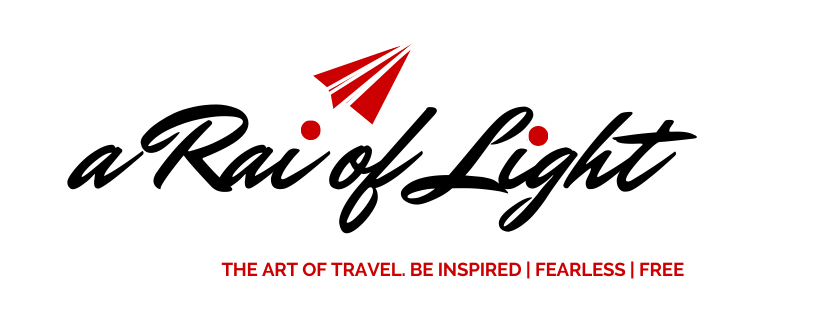

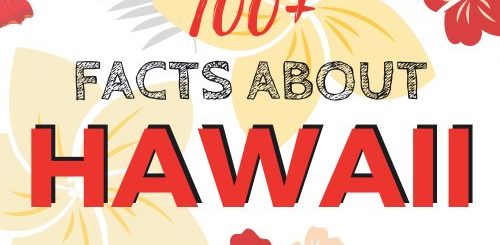
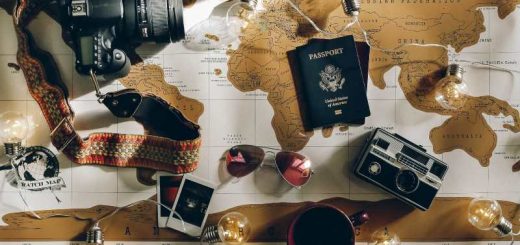
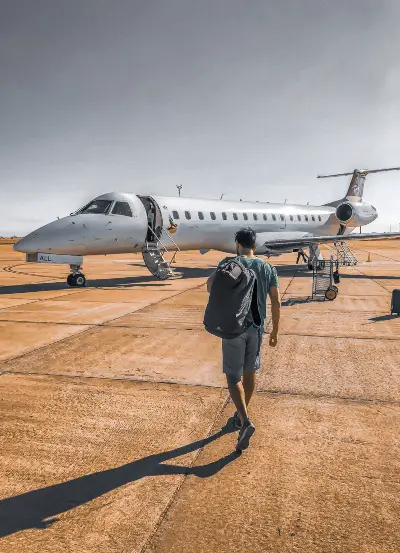 New Here?
New Here? 







